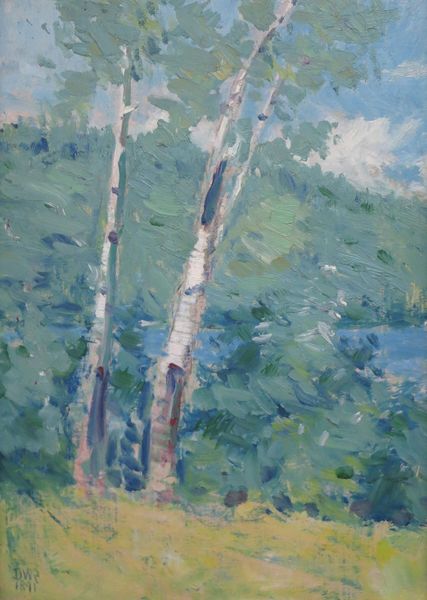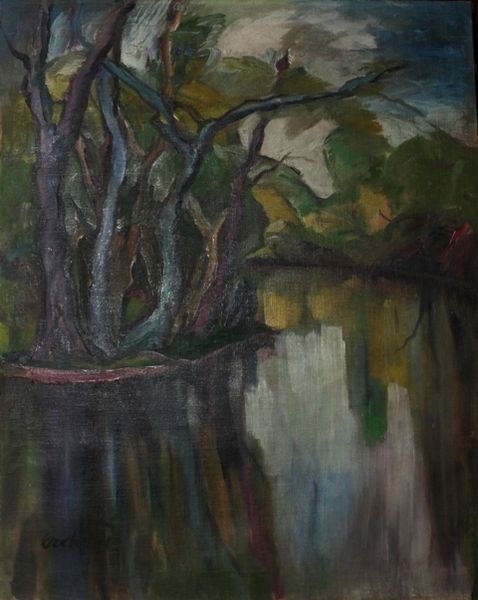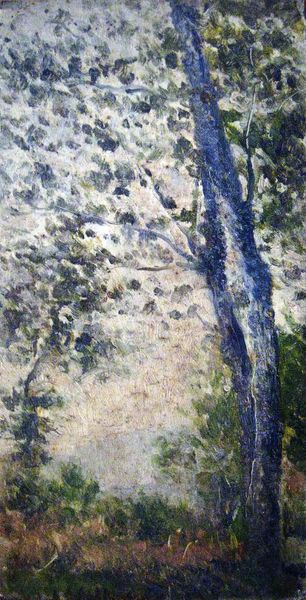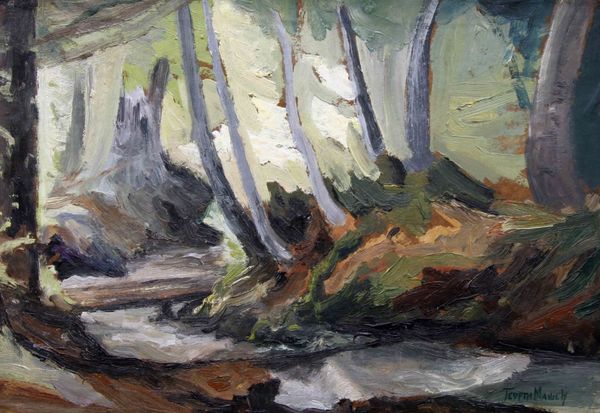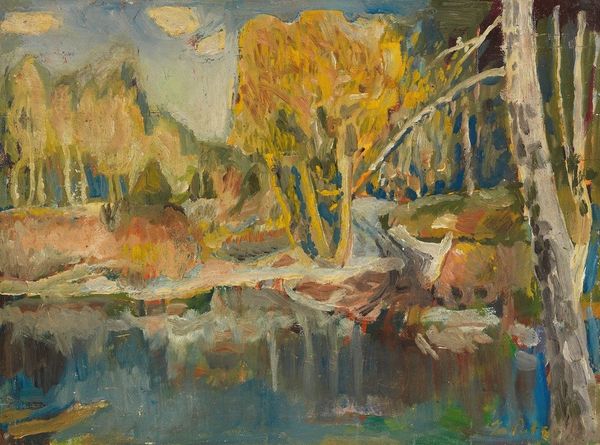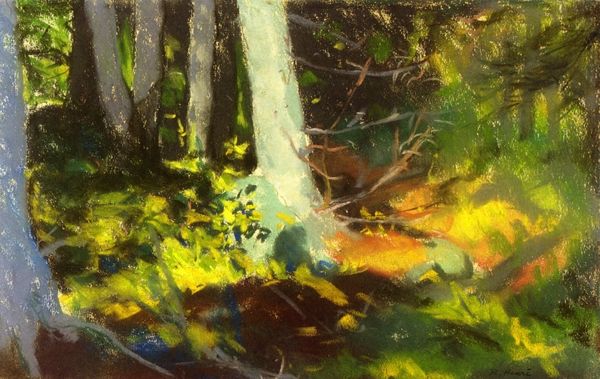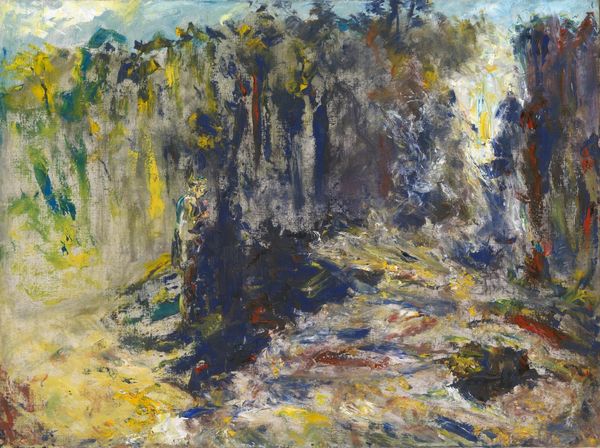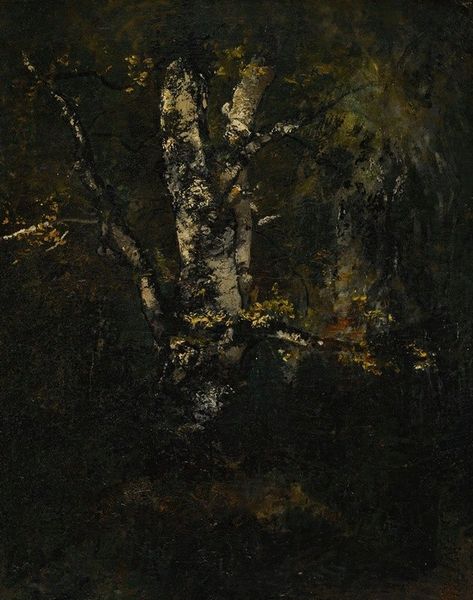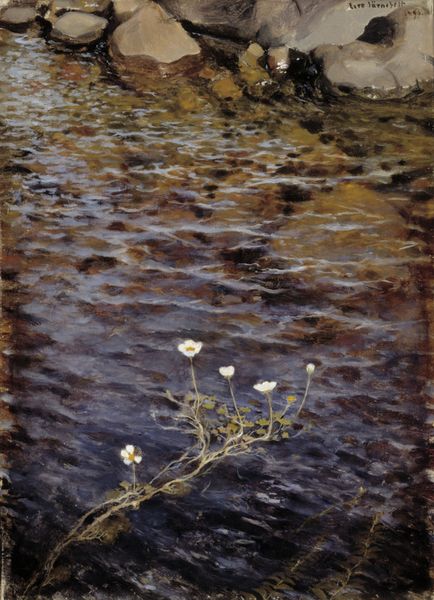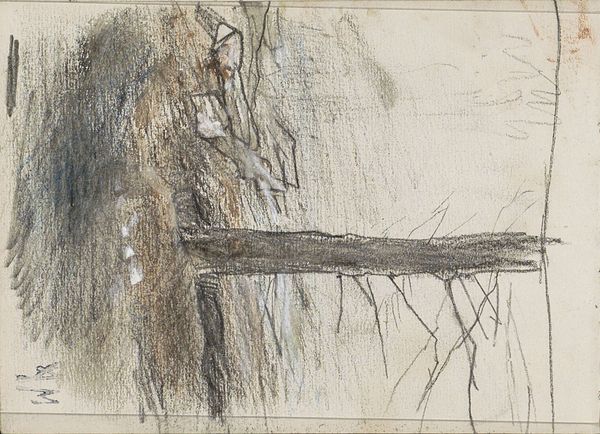
Copyright: Public domain
Editor: Here we have Leon Wyczółkowski's "Birch in Gościcraz," an oil painting from 1930. It strikes me as rather subdued, almost monochromatic, despite being a landscape. What do you see in this piece, Professor? Curator: Immediately, I’m drawn to the painting's compositional strategy. Notice how the stark verticality of the birch trunk bisects the canvas, creating a clear division in pictorial space. And yet, the leaning branch introduces a compelling diagonal that disrupts this rigid structure. Editor: So you are saying it's about the lines, and how they divide the piece up? Curator: Precisely. Note the texture. The impasto technique is evident, adding a tactile quality to the foliage and bark. Light doesn't seem to be naturally placed, though, the composition values the lines and shape, while perhaps making only basic use of the material that describes depth of space. What sort of statement would you say he's making about realism or rejecting it in this piece? Editor: So he uses these recognizable forms of nature, like the birch tree and the foliage, but almost as an excuse for this abstract organization of the canvas. It's realism, but more about the "paint-ness," less about the scene itself. I hadn't really noticed that at first glance! Curator: It highlights the materiality of the paint itself, redirecting our gaze from mere representation to the artist's intervention. So this allows us to think about what role line, plane, and texture have in our experience of seeing. I do see his interest in that in this work now. Thank you.
Comments
No comments
Be the first to comment and join the conversation on the ultimate creative platform.
